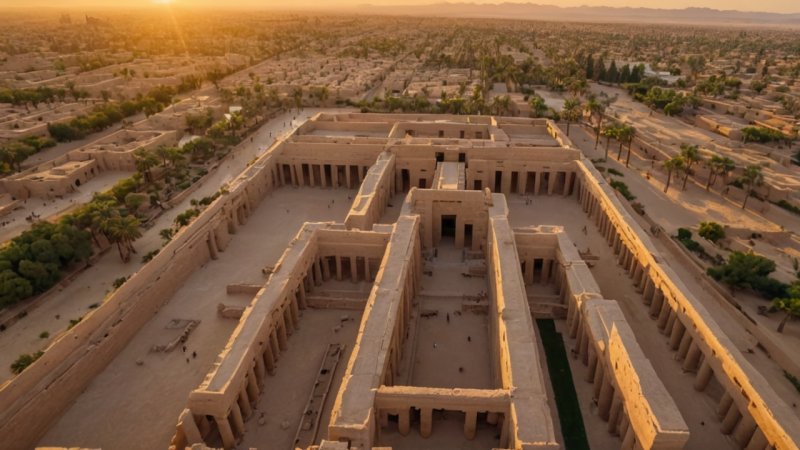The temples of Luxor and Karnak are two of the most iconic and historically significant monuments in Egypt, attracting travelers from all over the world. Both temples stand as testaments to the grandeur of ancient Egyptian civilization and religion, yet they offer distinct experiences and insights into the ancient world. This article will explore the key differences and similarities between the Temple of Luxor and the Temple of Karnak, helping travelers decide which site to prioritize during their visit to Egypt.
Historical Significance
The Temple of Luxor was constructed during the reign of Pharaoh Amenhotep III in the 14th century BC and dedicated to the Theban Triad, particularly the god Amun. It served as a central part of the annual Opet Festival, which celebrated the fertility of the Nile and the rejuvenation of the king. In contrast, the Temple of Karnak is a vast complex that took over 2,000 years to build, with contributions from many pharaohs. It is dedicated primarily to Amun and is considered one of the largest religious complexes ever built.
Architectural Features
The Temple of Luxor is renowned for its grandeur and intricate carvings, including the famous colonnade of 14 large columns that are adorned with beautiful hieroglyphics. The temple’s design is characterized by its symmetry and the use of sandstone, giving it a warm, golden hue in the sunlight. On the other hand, the Temple of Karnak boasts an impressive layout that includes several temples, pylons, and vast courtyards. Its Hypostyle Hall, with 134 massive columns, is a marvel of engineering and design, showcasing the architectural prowess of ancient Egyptians.
Size and Scale
When it comes to size, the Temple of Karnak is unparalleled. Spanning over 100 acres, it is one of the largest religious sites in the world. The sheer scale of Karnak can be overwhelming, as visitors can easily spend hours exploring its many sections. In contrast, the Temple of Luxor, while still impressive, is much smaller and more manageable, covering an area of about 26 acres. This makes Luxor more conducive to a shorter visit, allowing travelers to appreciate its beauty without feeling rushed.
Visitor Experience
Visitors to the Temple of Luxor often describe the experience as intimate and awe-inspiring. The temple is illuminated beautifully at night, creating a magical atmosphere that enhances its historical context. Guided tours are available, providing deeper insights into the temple's significance and its role in ancient Egyptian society. Meanwhile, the Temple of Karnak offers a more expansive experience, with numerous paths and sections to explore. The Sound and Light Show at Karnak is particularly popular, as it narrates the history of the temple through stunning visuals and audio, providing a unique perspective on the site.
Accessibility
Both temples are easily accessible from the city of Luxor. However, the Temple of Luxor is located right in the center of town, making it the more convenient option for travelers staying in nearby accommodations. Karnak, while still close, requires a short drive or taxi ride. Additionally, the Temple of Luxor tends to be less crowded than Karnak, especially during peak tourist seasons, allowing for a more leisurely exploration of its features.
Photography Opportunities
For photography enthusiasts, both temples offer stunning opportunities, but in different ways. The Temple of Luxor is particularly photogenic at sunrise and sunset, when the golden sandstone glows softly. The dramatic lighting creates a picturesque backdrop, perfect for capturing memorable photos. On the other hand, the vast scale of Karnak allows for expansive shots that convey the grandeur of ancient architecture. The towering columns and intricate hieroglyphs provide endless opportunities for unique photographs.
Conclusion
In summary, both the Temple of Luxor and the Temple of Karnak are indispensable parts of any visit to Egypt, each offering its own unique charm and historical significance. The Temple of Luxor is perfect for those seeking a more intimate experience with stunning architecture and a central location, while the Temple of Karnak is ideal for travelers looking to immerse themselves in the vastness of ancient Egyptian religious practices. Ultimately, the choice between the two may come down to personal preferences regarding time, interests, and travel plans. However, for a comprehensive experience of ancient Egypt, visiting both temples is highly recommended.






